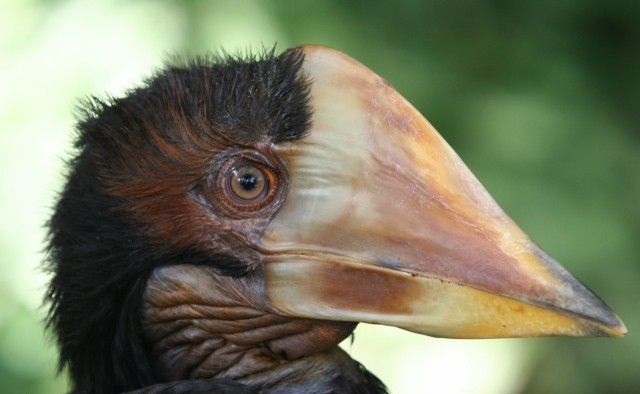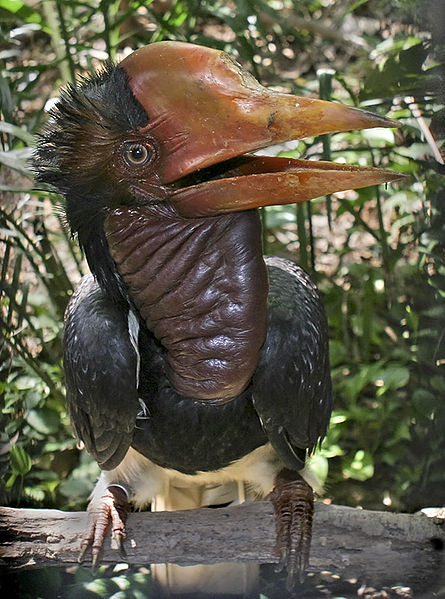Form andFunction
How has
the Helmeted Hornbill's form adapted and how does this affect
its function?
The Buceros vigil
has the many different adaptations that are universal to all
birds of all such as wings, hollow bones, etc. Yet, being a hornbill there are some very specific
adaptations that are very important to this organisms survival.
To start the size of an animal is an extremely important physical characteristic that has many effects on the sort of life an animal lives. Hornbills share an extreme variation in size with the Helmeted Hornbill being one of the larger species within the family. This size gives way to many different characteristics in the bird. First of all the size gives an organism an advantage in terms of being a predator. In the case of the Buceros vigil the size of the bird has led to it being a major predator of small vertebrates within its habitat (Kemp 1995). This size may also share a function in one of the more interesting characteristics of the Helmeted Hornbill's behaviors.
Further discussed in the
interactions
section of this site, the Helmeted Hornbill is know
to engage in aerial jousting between individuals in which they fly
at each other and ram their casques together. Physics plays an
integral part in the size of these birds in the fact that not only
do they need to be able to maneuver quickly in this sort of
jousting. Also the bird with a larger mass will hypothetically be
able to strike with more force, fighting its foe off (Kemp 1995,
Kinnaird et al. 2003).
Another extremely important physical characteristic of all hornbills, especially the Buceros vigil, is the birds casque. The casque of the hornbills is one of its most distinguishing features. The casque has an array of functions for these birds. First of all, the casque is thought to provide a sort of acoustic function for the birds. The specific structures in the different hornbills lead to different sounds that is unique to each species. the helmeted hornbill is specifically well know for its loud call. It is extremely unique and one of the loudest of the forest.The Helmeted Hornbill's casque is a very important of the creation of their unique cackle and hoot call (Kemp 1995). To hear an example of this birds amazing call click here for a sound clip.
The casque also serves another important function which has its roots in its basic structure in the Helmeted Hornbill. This hornbills casque is unique in the fact that the front portion is a block of solid ivory and composer 11% of the overall body weight (Kemp 1995). This casque form is extremely important in this birds mid-air collisions that have been mentioned numerous times and can be better investigated in the interactions section. The solid structure of the casque makes it possible for these hornbills to have such high impact collisions without seriously injuring themselves.
The casque has many other functions that have been The structure support a theory that it is used as a sort of chisel to access small animals from holes inside of trees. The Buceros vigil has also beene found to have extremely strong jaw mechanisms (Kemp 1995) . These serve a purpose in killing prey and fighting. There are other ideas that the structure also helps in the creation of their nests, which is further examined on the reproduction page.
Continue on to learn about the
Buceros vigil's
Reproduction
or
Head back to the
homepage
(content 2)

